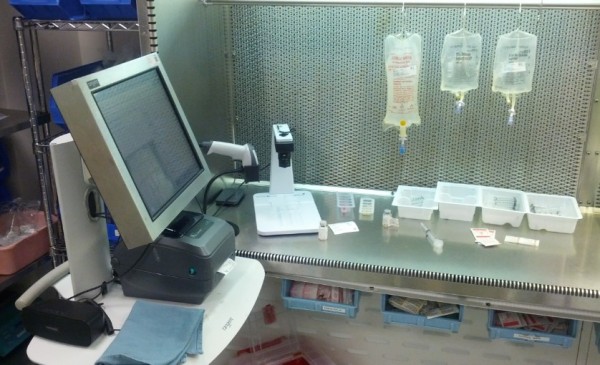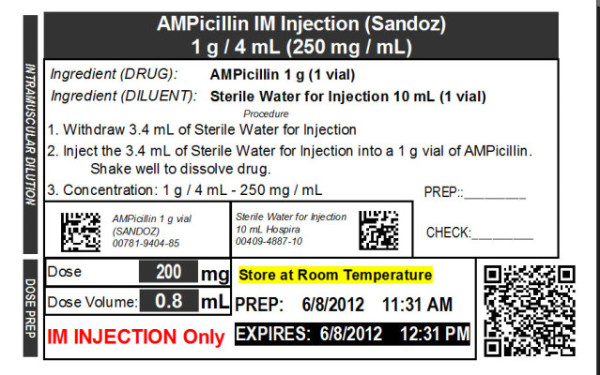You can add another player to already crowded IV workflow management system space.
I heard a rumor that CareFusion had some new technology in their booth at ASHP Midyear this year. Since I’m at ASHP Midyear I decided to wonder over there to take a look, and lo and behold they did indeed have some new stuff. One of the things that caught my eye was their new IV room system.
The system is like many that I’ve seen, complete with camera and barcode scanning for IV medication preparation. I didn’t have much time to evaluate the system, and it’s virtually impossible to do so in the span of a short demo, but overall the Pyxis IV system hits all the major safety checkpoints for this kind of stuff.
CareFusion is playing things pretty smart by moving into the IV room. They’re taking a broad approach to managing the entire inpatient pharmacy, i.e. they now have products that cover medication distribution from back door to the patient, including both IV and non-IV medications. Well played.
So what’s the over-under on how long it will take Omnicell to build or buy an IV room system?
From the CareFusion newsroom:
While the greatest percentage of a hospital pharmacy budget is the cost of IV medication, it is estimated that fewer than 10 percent of hospitals use automation within their IV room where infused medication is compounded. The new Pyxis IV system* helps standardize the workflow in the central pharmacy IV room to securely manage a closed-loop pick, prep and check process, while driving efficiency in pharmacy activities. This standardization also helps improve the accuracy and error rate reduction of the IV compounding process, as well as free up pharmacy staff to redeploy to clinical activities. The new Pyxis IV system consists of monitors in the IV room that walk clinicians through each compounding step. The system organizes all similar orders and recommends the proper vial size to use when compounding to help minimize waste. The system also has video cameras to record compounding components to help facilitate remote checking by a pharmacist, which saves time by eliminating the need for clean room entrance and exit processes



